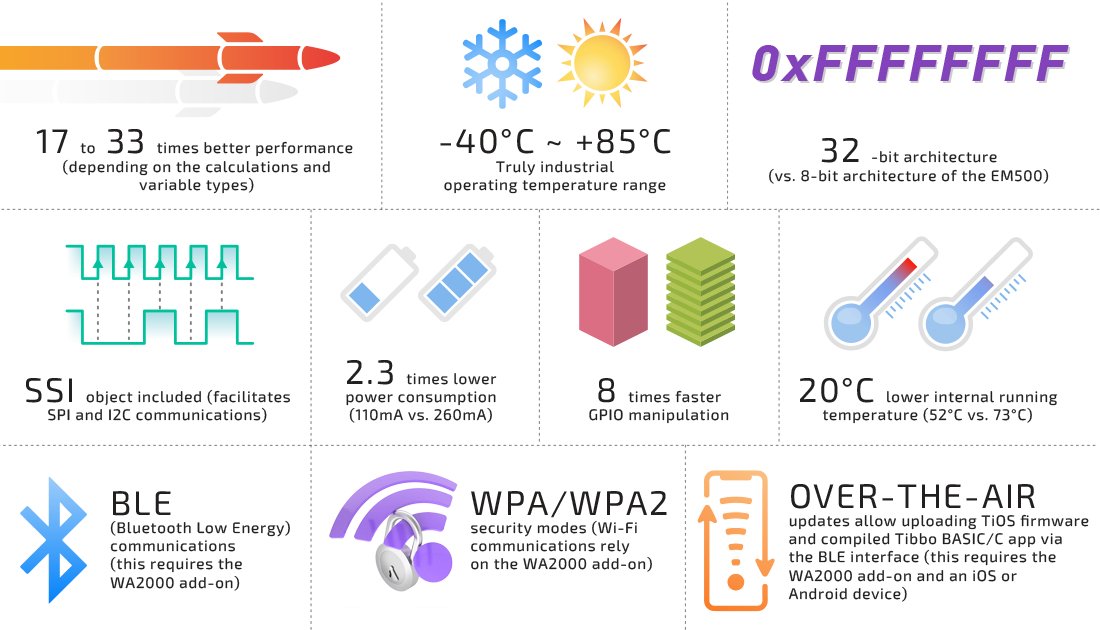Stands Up, Stands Out
Designed to be mounted vertically and fit behind a standard RJ45 jack, the EM510 reduces the required board space to minuscule 18.5 x 6.5mm (0.73 x 0.25"). The width and height of the EM510 are very close to those of a standard RJ45 jack.
An Enlightening Idea
How many LEDs does a typical RJ jack have? Two. How many LEDs Tibbo modules usually require? At least three — red and green status LEDs, plus one yellow Ethernet link LED.
Minimalist to the end, MiniMo devices make do with just two LEDs of a standard RJ45 jack: device states are displayed using flashing patterns, while LED brightness indicates the Ethernet link state. This is a patented feature available exclusively on our MiniMo line of products.
















Log In